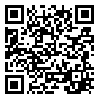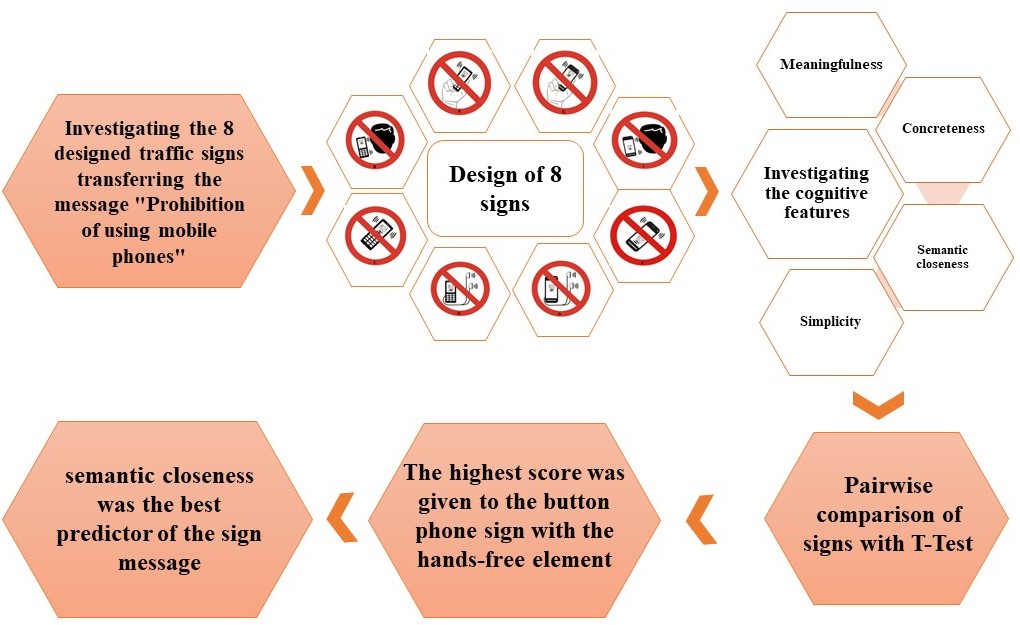Volume 14, Issue 1 (3-2024)
J Health Saf Work 2024, 14(1): 20-39 |
Back to browse issues page
Download citation:
BibTeX | RIS | EndNote | Medlars | ProCite | Reference Manager | RefWorks
Send citation to:



BibTeX | RIS | EndNote | Medlars | ProCite | Reference Manager | RefWorks
Send citation to:
Ghasemi Koozekonan A, Pouyakian M, Alipour A, Samimi K, Tabatabai Ghomsheh F. Determining the effect of graphic elements of eight new traffic signs on conveying the message “Prohibition of using mobile phones while driving”. J Health Saf Work 2024; 14 (1) :20-39
URL: http://jhsw.tums.ac.ir/article-1-6937-en.html
URL: http://jhsw.tums.ac.ir/article-1-6937-en.html
Aysa Ghasemi Koozekonan1 
 , Mostafa Pouyakian *
, Mostafa Pouyakian * 
 2, Abbas Alipour3
2, Abbas Alipour3 
 , Kazem Samimi4
, Kazem Samimi4 
 , Farhad Tabatabai Ghomsheh5
, Farhad Tabatabai Ghomsheh5 


 , Mostafa Pouyakian *
, Mostafa Pouyakian * 
 2, Abbas Alipour3
2, Abbas Alipour3 
 , Kazem Samimi4
, Kazem Samimi4 
 , Farhad Tabatabai Ghomsheh5
, Farhad Tabatabai Ghomsheh5 

1- Student Research committee, School of Public Health and Safety, Shahid Beheshti University of Medical Sciences, Tehran, Iran
2- Department of Occupational Health and Safety Engineering, School of Public Health and Safety, Shahid Beheshti University of Medical Sciences, Tehran, Iran ,pouyakian@sbmu.ac.ir
3- Department of Community Medicine, Faculty of Medicine, Mazandaran University of Medical Sciences, Sari, Iran
4- Department of Occupational Health and Safety Engineering, School of Public Health and Safety, Shahid Beheshti University of Medical Sciences, Tehran, Iran
5- Pediatric Neurorehabilitation Research Center, University of Social Welfare and Rehabilitation Sciences, Tehran, Iran
2- Department of Occupational Health and Safety Engineering, School of Public Health and Safety, Shahid Beheshti University of Medical Sciences, Tehran, Iran ,
3- Department of Community Medicine, Faculty of Medicine, Mazandaran University of Medical Sciences, Sari, Iran
4- Department of Occupational Health and Safety Engineering, School of Public Health and Safety, Shahid Beheshti University of Medical Sciences, Tehran, Iran
5- Pediatric Neurorehabilitation Research Center, University of Social Welfare and Rehabilitation Sciences, Tehran, Iran
Abstract: (696 Views)
Introduction: The design of traffic signs should consider human cognitive abilities to enhance drivers’ understanding of the signs. Cognitive features, as one of the crucial principles of ergonomics, are among the influential factors in the design of signs. The present study aimed to evaluate the effect of graphic elements of eight new sign designs based on cognitive features on conveying the message “prohibition of using mobile phones.”
Material and Methods: This study was conducted in six driving schools in Tehran in 2013. One hundred seventy-four participants, with an average age of 23.5 and a standard deviation of six years, participated in this study. Participants were then presented with the designed signs through a colored questionnaire. They were instructed to evaluate the signs’ cognitive features including simplicity, concreteness, meaningfulness, and semantic closeness—using a Likert scale ranging from 0 to 100.
Results: The results revealed that the average score of the cognitive features of the designed signs is higher than other traffic, industrial and pharmaceutical signs. In this study, “semantic closeness” was the best cognitive feature for predicting the message of the signs. The sign with the “hands-free” element had the best performance in transferring the message.
Conclusion: This research aimed to identify the most effective of eight proposed signs for banning mobile phone use while driving. Participants rated the sign featuring a button phone with a hands-free symbol as the top choice. Although most of the mobile phones in the market are of the touch screen type and the use of button phones has decreased a lot, the symbol of these phones as the dominant symbol still effectively conveys messages.
Material and Methods: This study was conducted in six driving schools in Tehran in 2013. One hundred seventy-four participants, with an average age of 23.5 and a standard deviation of six years, participated in this study. Participants were then presented with the designed signs through a colored questionnaire. They were instructed to evaluate the signs’ cognitive features including simplicity, concreteness, meaningfulness, and semantic closeness—using a Likert scale ranging from 0 to 100.
Results: The results revealed that the average score of the cognitive features of the designed signs is higher than other traffic, industrial and pharmaceutical signs. In this study, “semantic closeness” was the best cognitive feature for predicting the message of the signs. The sign with the “hands-free” element had the best performance in transferring the message.
Conclusion: This research aimed to identify the most effective of eight proposed signs for banning mobile phone use while driving. Participants rated the sign featuring a button phone with a hands-free symbol as the top choice. Although most of the mobile phones in the market are of the touch screen type and the use of button phones has decreased a lot, the symbol of these phones as the dominant symbol still effectively conveys messages.
Type of Study: Research |
Received: 2024/03/25 | Accepted: 2024/03/29 | Published: 2024/03/29
Received: 2024/03/25 | Accepted: 2024/03/29 | Published: 2024/03/29
Send email to the article author
| Rights and permissions | |
 |
This work is licensed under a Creative Commons Attribution-NonCommercial 4.0 International License. |





